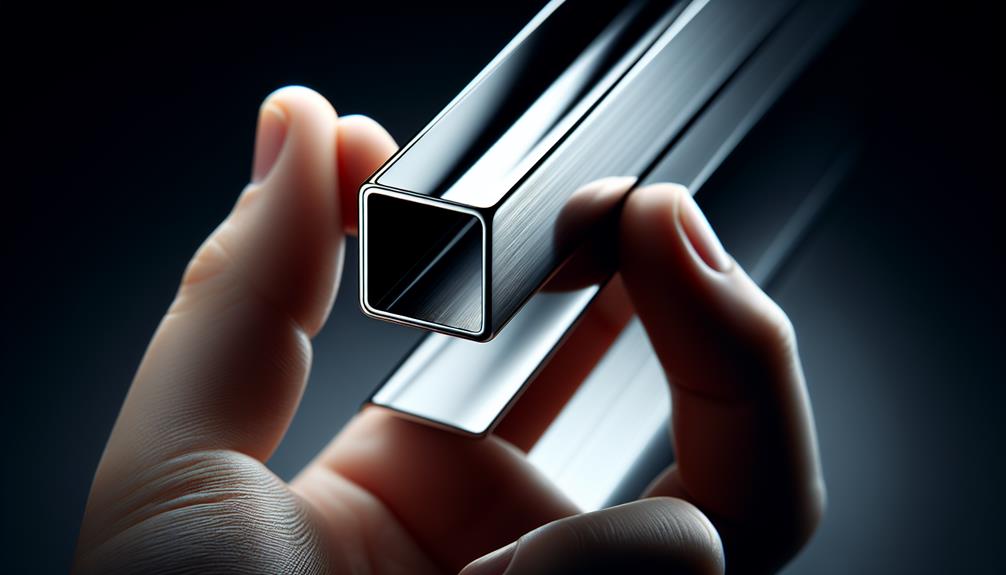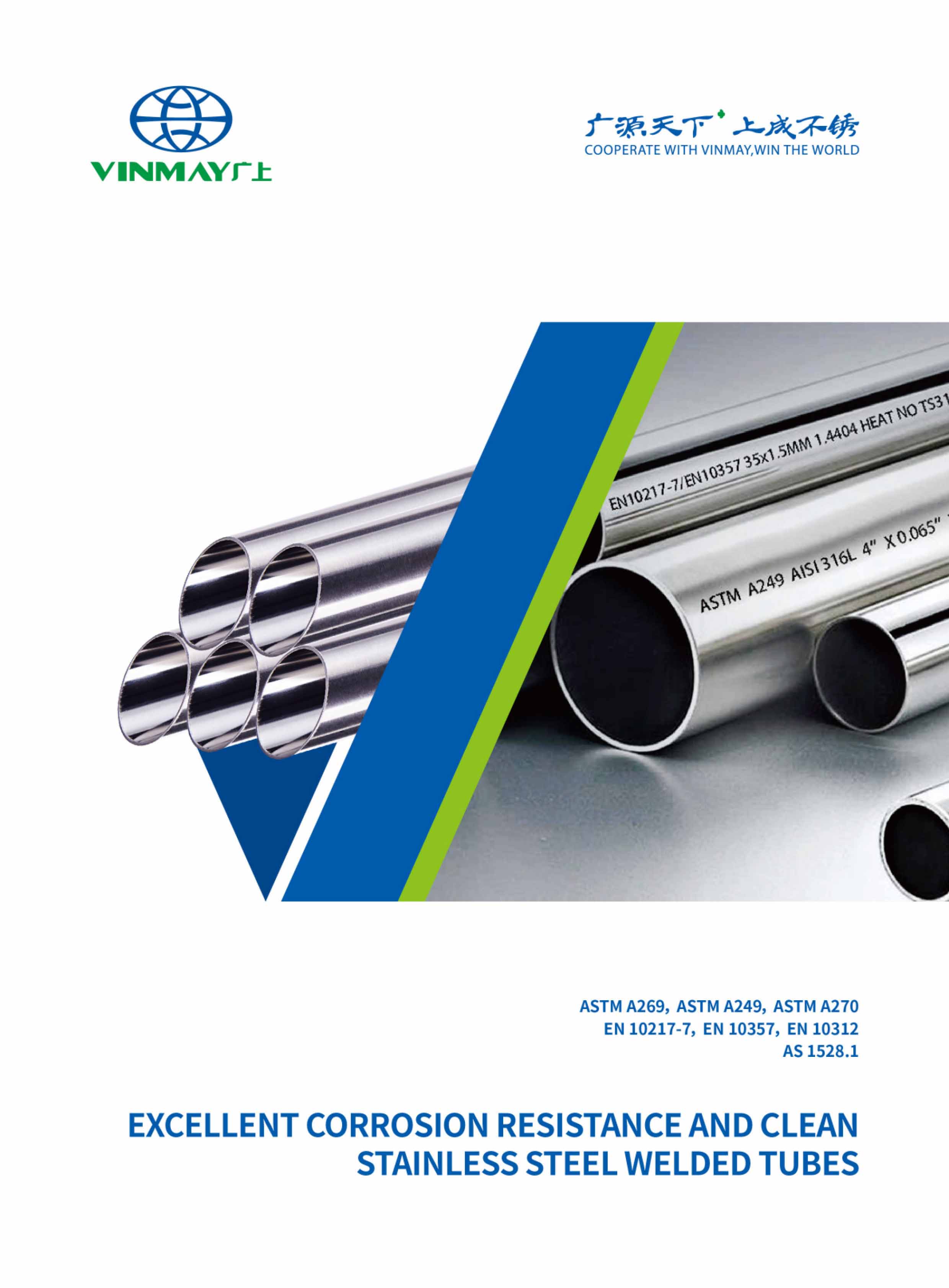Polished stainless steel square tubing is a versatile and highly sought-after material in various industries. Its sleek and shiny appearance, coupled with its durability and corrosion resistance, make it an ideal choice for architectural, industrial, and decorative applications.
However, there is more to polished stainless steel square tubing than meets the eye. From understanding its standard specifications and size range to exploring different polishes and measuring techniques, this discussion will delve into the intricacies of this material, providing valuable insights for those seeking to make informed decisions and maximize the potential of polished stainless steel square tubing.

Polished stainless steel square tubing refers to a type of hollow, four-sided metal structure that has undergone a process of polishing to achieve a smooth and reflective surface finish. This process involves removing any imperfections, such as scratches or blemishes, from the surface of the tubing. The result is a polished surface that is aesthetically pleasing and highly resistant to corrosion.
When it comes to the specifications of polished stainless steel square tubing, there are several factors to consider. The size range typically varies from 1/2 inch to 8 inches, with different wall thickness options available to suit various applications. The wall thickness ranges from 18 gauge to 10 gauge, depending on the specific requirements of the project.
Polished stainless steel square tubing is available in different polishes, including brushed, mirror, and satin finishes. Each polish offers its unique appearance and level of reflectivity. Brushed finishes provide a more subdued and textured look, while mirror finishes offer a highly reflective surface. Satin finishes, on the other hand, fall somewhere in between, providing a smooth and matte appearance.
With regards to the standard specifications of polished stainless steel square tubing, an important reference to consider is ASTM A554. This specification covers welded stainless steel mechanical tubing used in various applications such as ornamental, structural, and architectural purposes.
The size range of polished stainless steel square tubing specified in ASTM A554 varies from 1/2 inch to 12 inches, with wall thicknesses ranging from 0.049 inches to 0.375 inches. The tubing is available in different finishes, including 180 grit, 320 grit, and 600 grit. These finishes are achieved through mechanical polishing processes, which remove surface imperfections and create a smooth and glossy appearance.
In addition to the various polishes, ASTM A554 also defines different finish types for polished stainless steel square tubing. These include mill finish, brushed finish, and mirror finish, each offering a distinct aesthetic appeal.
The standard specifications provided by ASTM A554 ensure the consistent quality and performance of polished stainless steel square tubing, making it a reliable choice for a wide range of applications.
The size range of polished stainless steel square tubing is specified in ASTM A554 and varies from 1/2 inch to 12 inches, with wall thicknesses ranging from 0.049 inches to 0.375 inches. This range provides flexibility for various applications and allows for customization based on specific project requirements.
Refer to the comprehensive chart below for the nominal sizes, outside dimensions, and wall thickness options, ensuring you make informed decisions for your specific project needs.
Size Range Chart for Polished Stainless Steel Square Tubing
| Nominal Size (Inches) | Outside Dimension (OD) (Inches) | Wall Thickness (Inches) |
|---|---|---|
| 1/2 | 0.500 | 0.065, 0.083, 0.120 |
| 3/4 | 0.750 | 0.065, 0.083, 0.120 |
| 1 | 1.000 | 0.065, 0.083, 0.120, 0.188 |
| 1-1/4 | 1.250 | 0.065, 0.083, 0.120, 0.188 |
| 1-1/2 | 1.500 | 0.065, 0.083, 0.120, 0.188 |
| 2 | 2.000 | 0.065, 0.083, 0.120, 0.188, 0.250 |
| 2-1/2 | 2.500 | 0.083, 0.120, 0.188, 0.250 |
| 3 | 3.000 | 0.083, 0.120, 0.188, 0.250 |
| 4 | 4.000 | 0.083, 0.120, 0.188, 0.250, 0.375 |
| 6 | 6.000 | 0.120, 0.188, 0.250, 0.375 |
| 8 | 8.000 | 0.188, 0.250, 0.375, 0.500 |
Read More: The Anatomy of Stainless Steel Square Tube Sizes: What You Need to Know
The range of wall thicknesses available for polished stainless steel square tubing is essential to consider for various applications and project requirements. The wall thickness of the tubing directly affects its strength, durability, and corrosion resistance.
When selecting the appropriate wall thickness for polished stainless steel square tubing, it is crucial to consider the intended use of the tubing. Thicker walls provide increased strength and durability, making them suitable for applications requiring higher load-bearing capacities or resistance to external forces. Thicker walls also offer improved corrosion resistance, making them ideal for outdoor or corrosive environments.
On the other hand, thinner walls are often used in applications where weight and cost savings are prioritized. Thinner walls can be suitable for lighter-duty applications or projects with limited space constraints.
It is important to note that selecting the optimal wall thickness is not solely dependent on the desired application or project requirements. Other factors, such as the specific material composition and manufacturing process, also influence the overall performance of the tubing.
Recommended: Calculating Stainless Steel Square Tube Weight

Polishes play a crucial role in enhancing the appearance and corrosion resistance of polished stainless steel tubing. When it comes to polishing stainless steel, different grits are commonly used, including 180, 240, and 320. These grits determine the level of smoothness and reflectivity achieved on the surface of the tubing.
To achieve the desired surface finishes on polished stainless steel tubing, various polishing techniques can be employed. These techniques may involve the use of polishing equipment such as buffing wheels, belts, or abrasive pads. The choice of equipment depends on the size and shape of the tubing, as well as the level of polish desired.
Polishing compounds are another important aspect of the polishing process. These compounds contain abrasive particles suspended in a liquid or paste form. They help remove imperfections and scratches from the surface of the stainless steel tubing, resulting in a smooth and shiny finish. Different compounds are available for different levels of polishing, ranging from coarse to fine.
Regular maintenance is crucial for preserving the polished surface of stainless steel tubing. This includes cleaning the surface with mild detergents or stainless steel cleaners to remove dirt, fingerprints, and other contaminants. It is important to avoid using abrasive cleaners or scrubbing pads that can damage the polished surface.
Different types of finishes are available for polished stainless steel square tubing. These finishes are achieved through various surface treatments and polishing techniques.
One popular finish is the mirror finish, which provides a highly reflective and smooth surface. This finish is achieved by using progressively finer abrasive materials during the polishing process, resulting in a glossy appearance.
Another common finish is the brushed finish, which creates a textured surface with visible parallel lines. This finish is achieved by brushing the stainless steel surface with abrasive materials, such as wire brushes or sandpaper, in a consistent direction. The brushing process removes any imperfections and produces a satin-like appearance.
In addition to the mirror and brushed finishes, there are other types of finishes available for polished stainless steel square tubing. One example is the bead blast finish, which creates a matte, textured surface by bombarding the steel with fine glass beads or ceramic particles. This finish is often used for decorative purposes or to hide surface imperfections.

One important aspect to consider when discussing polished stainless steel square tubing is its physical characteristics. These characteristics play a crucial role in determining the suitability of the tubing for various applications.
Here are three key physical characteristics of polished stainless steel square tubing:
Understanding these physical characteristics of polished stainless steel square tubing allows for informed decision-making when selecting the appropriate tubing for specific applications. Whether it is the need for corrosion resistance, ease of welding, or heat treatment capabilities, considering these factors ensures optimal performance and longevity.
The chemical composition of polished 304 stainless steel square tube is essential to understanding its properties and suitability for various applications. This type of stainless steel is primarily composed of iron, chromium, and nickel, with small amounts of other elements such as carbon, silicon, and manganese.
One of the key advantages of polished 304 stainless steel square tube is its excellent corrosion resistance. The chromium content in the alloy forms a passive protective layer on the surface, preventing the metal from corroding in various environments, including acidic and chloride-rich conditions.
Weldability considerations are also important when using polished 304 stainless steel square tubes. This alloy exhibits good weldability, allowing for the fabrication of complex structures without compromising its strength or corrosion resistance.
In terms of heat resistance, the polished 304 stainless steel square tube offers excellent performance at both high and low temperatures. It can withstand elevated temperatures without losing its structural integrity, making it suitable for applications that involve exposure to extreme heat or cold.
Surface finish options are another factor to consider. Polished 304 stainless steel square tubes can be finished to different levels of smoothness, ranging from a mirror-like finish to a brushed or satin finish, depending on the desired aesthetic and functional requirements.
Recommended: Advantages of Stainless Steel Square Tubing

The mechanical properties of polished 304 stainless steel square tubes play a crucial role in determining their strength and performance in various applications. Here are three key aspects of its mechanical properties:
In addition to these factors, the surface finish of the tube contributes to its overall mechanical properties. The polished surface not only enhances the aesthetics but also improves the tube's resistance to corrosion and wear.
Building on the understanding of the mechanical properties of polished 304 stainless steel square tubing, the discussion now turns to its dimensional tolerances. Dimensional accuracy is crucial in ensuring the proper fit and functionality of the tubing in various applications.
The manufacturing process of polished stainless steel square tubing involves multiple steps to achieve the desired dimensions. It begins with the selection of high-quality stainless steel and is followed by precise cutting, shaping, and forming. During these processes, strict quality control measures are implemented to maintain dimensional accuracy.
Surface finish plays a significant role in achieving precise dimensional tolerances. The smooth and polished surface of the tubing reduces friction and allows for better accuracy in measurements. Additionally, industry standards, such as ASTM A554, provide guidelines for dimensional tolerances to ensure consistency and compatibility with other components.
Quality control is essential in maintaining the desired dimensional tolerances. This involves regular inspections and measurements at various stages of the manufacturing process. Any deviations from the specified dimensions are identified and corrected promptly to meet the required standards.

When choosing the best stainless steel tubing type, it is important to understand the different grades available.
Stainless steel tubing is graded based on its composition, with common grades including 304, 316, and 409.
Each grade has its unique properties and is suited for specific applications.
Selecting the optimal stainless steel tubing type requires a thorough understanding of the various grades available. Here are three key factors to consider when choosing the best stainless steel tubing type:
One of the primary uses for polished stainless steel square tubing is in architectural and interior design applications. The sleek and polished appearance of the tubing adds a modern and sophisticated touch to various structures, such as staircases, handrails, and balustrades. Its durability and resistance to corrosion make it an ideal choice for outdoor applications as well.
The versatility of polished stainless steel square tubing allows it to be used in a wide range of industries, including automotive, manufacturing, and construction. Its high strength-to-weight ratio makes it a cost-effective option, as it requires minimal maintenance and has a long lifespan. Additionally, the smooth surface of the tubing makes it easy to clean and maintain its polished finish, further enhancing its aesthetic appeal.
Recommended: Applications of Stainless Steel Square Tubing
To accurately measure polished stainless steel square tubing, utilize precise measuring tools and follow these steps:
Common mistakes to avoid when measuring polished stainless steel square tubing include inaccurately positioning the measuring tools, not taking multiple measurements to account for variations, and not using precise measuring tools.
If you encounter any issues during the measuring process, troubleshoot by ensuring that the tubing is clean and free from debris and that the measuring tools are calibrated correctly.
Recommended resources for measuring polished stainless steel square tubing include online tutorials and videos that provide step-by-step guidance, as well as industry-specific forums where professionals share their expertise and best practices.

Regular care and maintenance are essential for ensuring the longevity and optimal performance of polished stainless steel square tubing. By following proper care techniques, cleaning methods, and storage recommendations, you can prevent corrosion and maintain the shine of your stainless steel square tubing.
To keep your polished stainless steel square tubing in pristine condition, it is important to clean it regularly using mild soap or detergent and warm water. Avoid using abrasive cleaners or brushes that could scratch the surface. After cleaning, make sure to rinse thoroughly and dry with a soft cloth to prevent water spots.
To prevent corrosion, it is recommended to apply a stainless steel cleaner or polish regularly. This will help remove any stains, fingerprints, or smudges and protect the surface from oxidation. Be sure to follow the manufacturer's instructions for the specific cleaner or polish you choose.
When storing polished stainless steel square tubing, it is important to keep it in a clean and dry environment. Avoid storing it in areas with high humidity or exposure to corrosive substances. If possible, cover the tubing with a protective material to prevent scratches or damage.
By following these care and maintenance recommendations, you can ensure that your polished stainless steel square tubing remains in excellent condition, maintaining its shine and performance for years to come.
Recommended: Maintenance Tips for Stainless Steel Square Tubing
Polished stainless steel square tubing can be used for outdoor applications due to its high durability and weather resistance. It also provides aesthetic appeal. However, alternative materials should be considered based on cost comparison and specific project requirements.
Is it possible to customize the size and dimensions of stainless steel square tubing? Absolutely. With a range of customization options, including sizing considerations, dimensions flexibility, and tailor-made options, stainless steel square tubing offers a high level of personalization potential.
To maintain the polished finish of stainless steel square tubing, proper cleaning techniques should be employed. Protective coatings can be applied, and polishing compounds can be used with recommended tools. A regular maintenance schedule is recommended.
Polished stainless steel square tubing is commonly used in architectural designs due to its aesthetic appeal and durability. It is a cost-effective alternative to brushed stainless steel tubing and provides added strength and durability to structures. Additionally, it finds applications in the automotive industry.
Polished stainless steel square tubing exhibits excellent corrosion resistance and rust resistance, making it suitable for outdoor durability. Additionally, it offers size customization options and requires minimal maintenance.
You may also like:
In conclusion, polished stainless steel square tubing is a versatile and durable option for various applications. Its standard specifications, size range, and wall thickness make it suitable for different projects.
The choice of polishes and dimensional tolerances ensure a high-quality finish. By selecting the best stainless steel tubing type and following proper care and maintenance recommendations, users can maximize the lifespan and performance of polished stainless steel square tubing.
As the saying goes, 'A polished finish adds a touch of elegance to any project.'



